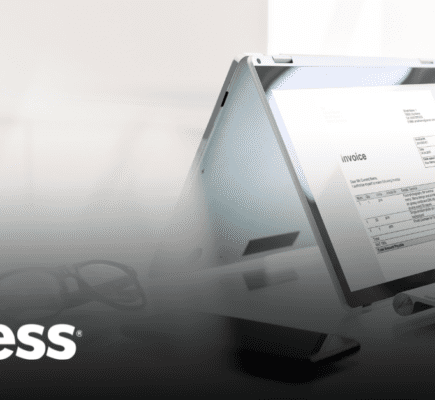
Let’s say you’ve decided to take the first step towards digitizing or increasing the scale of your digitization efforts. You’re going to take a lot of paper records, scan them with OCR, and maybe (hopefully) do some indexing. These expenses can add up, so it’s necessary to justify them against the value they provide.
Determining the Scope of Your Digitization Plans
Today, we think of records as being digital and digitization as a superior solution, but is it really always that simple? For some organizations, it may not make sense to go digital – at least not completely. Here are some key questions you should consider in order to determine the extent of your digitization project.
Can you successfully control digital records after creation?
Since there’s such a proliferation of dark data sets, it’s obvious that people are not in control of what data is created. In many cases, organizations digitize records without adequately thinking through how to hold onto them after they create them. They have no index or metadata whatsoever, just bytes and bytes of hundreds of thousands of images with all those mysterious serial numbers, rendering them both unidentifiable and uncontrollable.
Does everyone in your organization need remote and simultaneous access?
This is an internal consideration that varies from organization to organization. If there is just a single person in a remote office who is the only one who will ever have to look something up, it might be perfectly okay for them to simply take down a binder from a shelf. However, this likely isn’t the case for most organizations today due to the rise in remote and hybrid work environments.
What is the accession rate of your documents?
If you’ve got records that have long retention schedules but very low accession rates, digital may not be the most cost-effective solution. In such cases, acid-free paper might suffice.

Beyond Storage – A Comprehensive Information Management Checklist
Organizations of all kinds and sizes are finding themselves faced with an array of information management challenges. Some of these challenges, like the transformation of information technologies and the growth of data sets, have remained relatively unchanged for years.
Three Aspects to Consider Prior to Digitization
If you don’t get your process and procedures aligned right from the start, digitization alone is not the solution—it will just add to your list of problems. That’s why you must address three specific issues.
1. Do we understand our data? What don’t we need?
Have you ever worked for an organization that had a shared drive stuffed with files in folders, nested within folders, within even more folders? It can be impossible to find something if you don’t know where to look. Nobody is responsible. There is no structure, no metadata, no process for entering new data. In effect, it’s a free-for-all where people save whatever they want, necessary or not.
That’s why you need to be sure that you truly understand your data. Ask yourself these questions:
- Do we know what data we have—and where it is?
- Have we developed a metadata or indexing system?
- What value do the records have for the business?
- What regulatory compliance burdenapplies to the data?
- How long do we need to keep data?
- Do we need to do a complete digitization of all our records, or will a partial one better serve our needs?
2. What effect could migration have?
There’s another consideration before you’ve even migrated your data for the first time. The fact of the matter is, in ten years, or maybe even five, you’re going to have to move that data again, to the next version of your chosen repository.
This can leave you between a rock and a hard place. Migrating data is expensive and may not be a cost you’re willing to pay. But you may be in a regulated industry that requires you to keep certain types of information for a mandated period of time. In many cases, organizations end up having two systems: a forward solution plus an older legacy one that must be maintained because the data still has value or is subject to a regulatory requirement.
You must have the willingness to think two systems ahead.
3. Can a specific solution support our specific needs?
Answering this question depends upon the two previous points.
If you don’t know what your needs are, how can you select a technology that supports them? Every technology has upsides and downsides, with constant risks and challenges. Balancing risk against need is an exercise that you absolutely must go through, and it is not an easy one. Most people hope for an “easy button” in the next generation of technology, whether an imaging system, cloud-based computing, or whatever the next big thing is. Unfortunately, though, no solution comes with an easy button.
What people end up doing is buying first and implementing later. Then they discover that they’ve got an expensive—often very, very expensive—failed technology installation.
Plan First, Implement Second
Technology is not the solution. Your planning process is. Technologies are designed to solve a particular set of problems, which may not be the ones you are facing.
Don’t spend any money until you completely understand your own needs and do some significant planning. An information governance advisor can bring you up to date on regulatory requirements and help you eliminate ROT (redundant, obsolete or trivial information).
The technology spend should come at the very end of the digitization process, not at the beginning. Once you have done your due diligence, you’ll be in a position to know whether or not a specific technology is designed for you. To determine whether digitization is the solution, you must:
- Think through your metadata
- Complete a thorough indexing of the data you want to save
- Digitize your data correctly
Do these three steps before choosing a digitization solution. If you don’t, you’ll discover that you have created an expensive mess that not only has no value, but also puts your organization at more risk than before you started down the digitization path.
For additional insights to help you create an effective digitization strategy, watch the on-demand recording of this webinar: Unlocking the Value of Document Scanning: Strategies for Successful Digitization.



